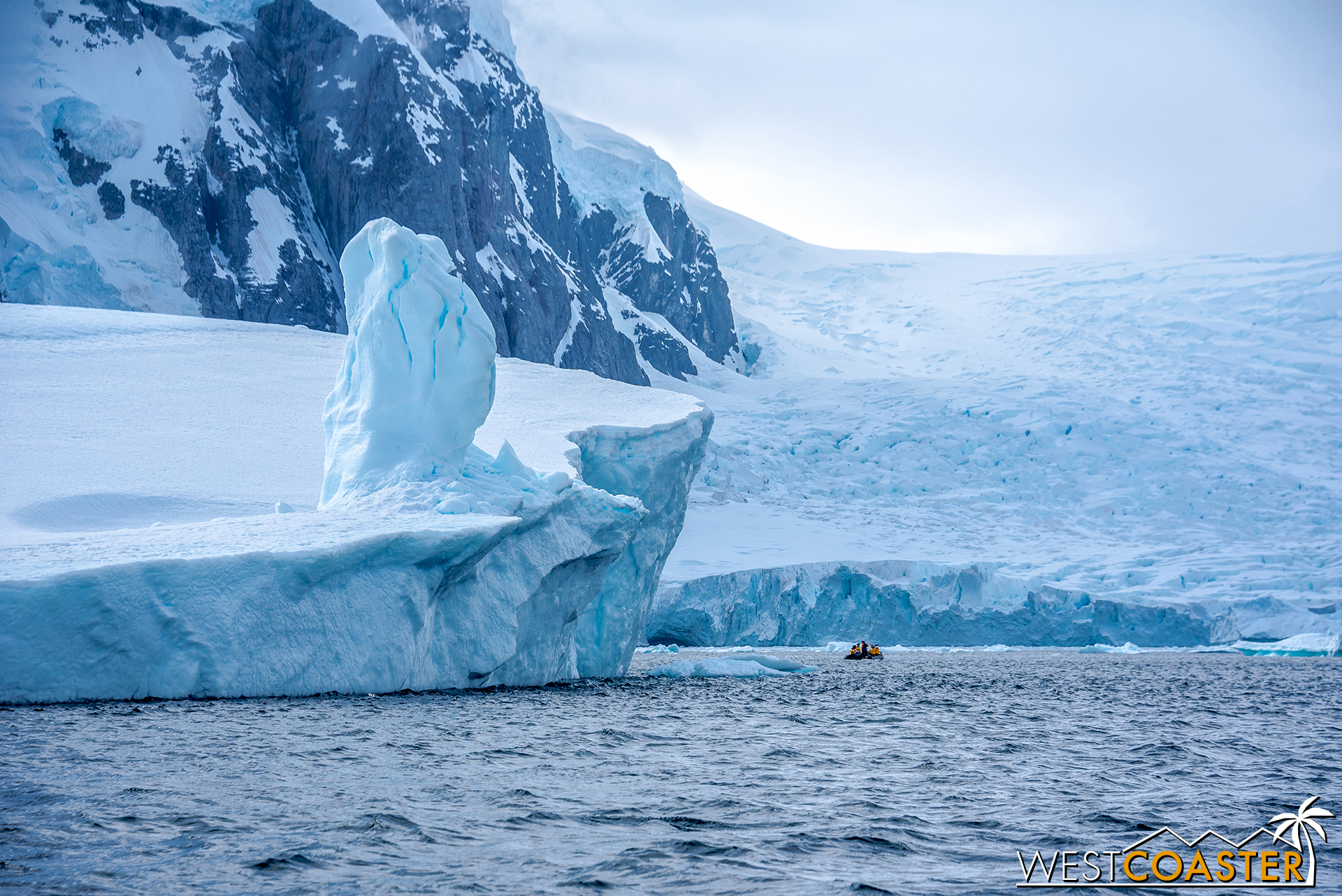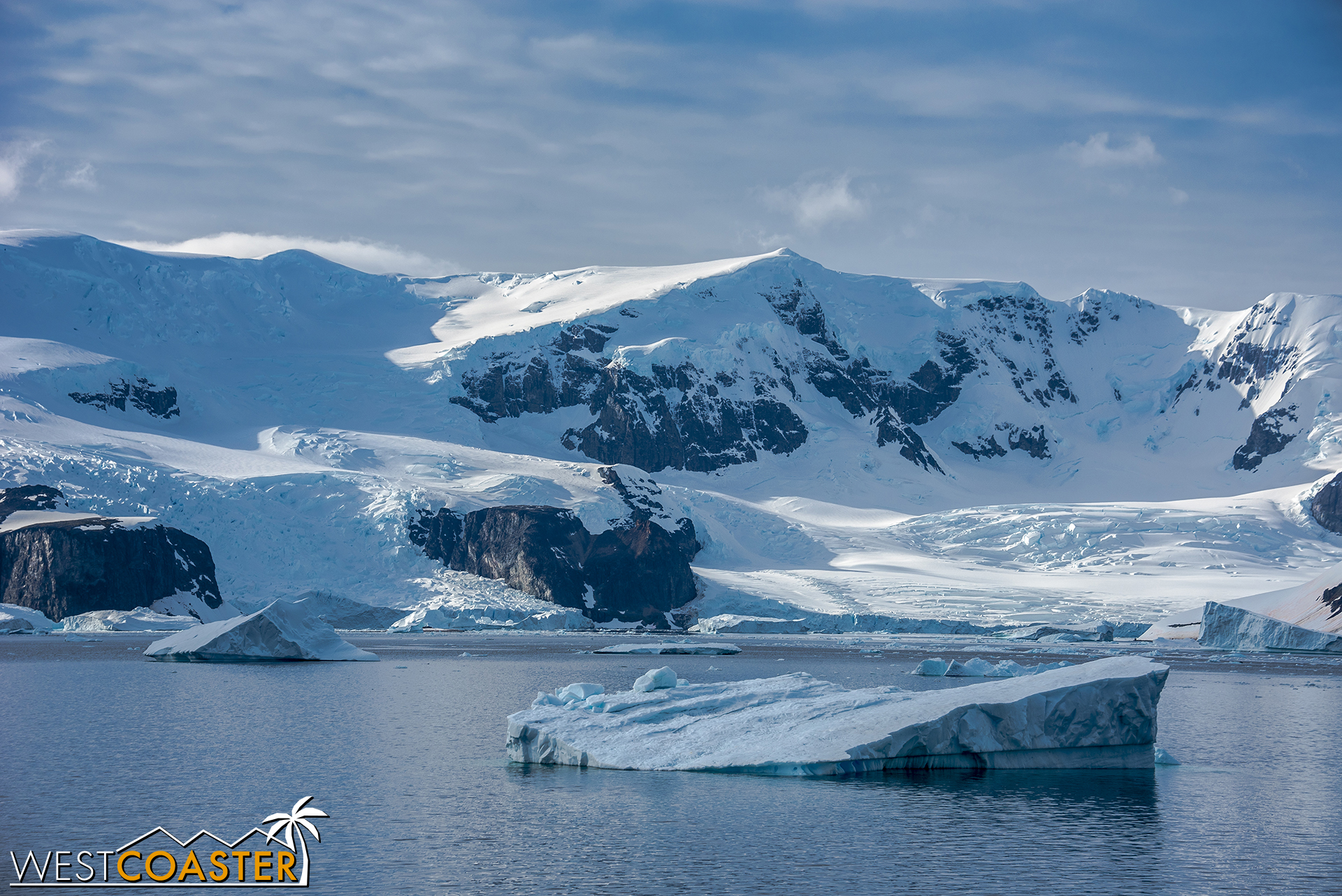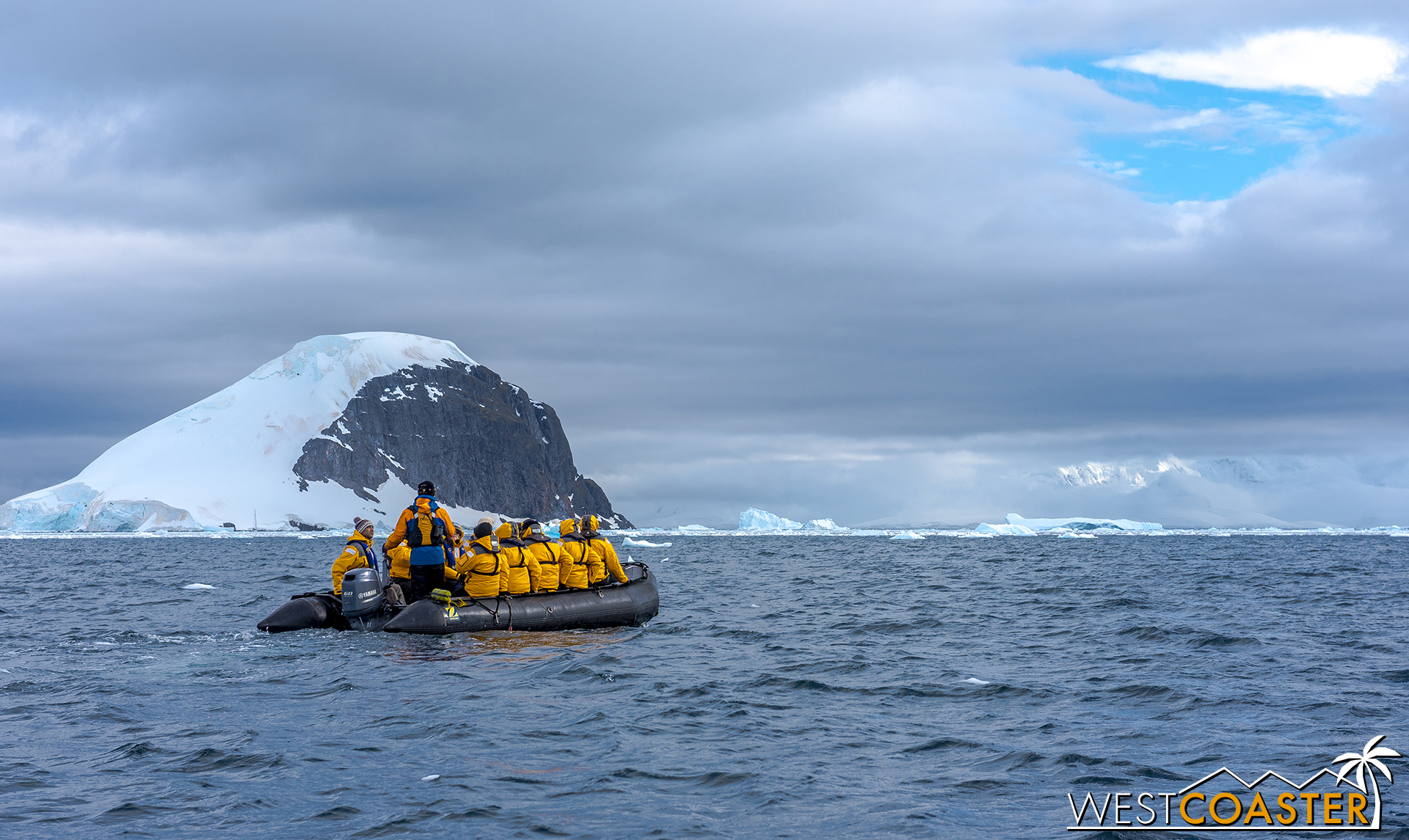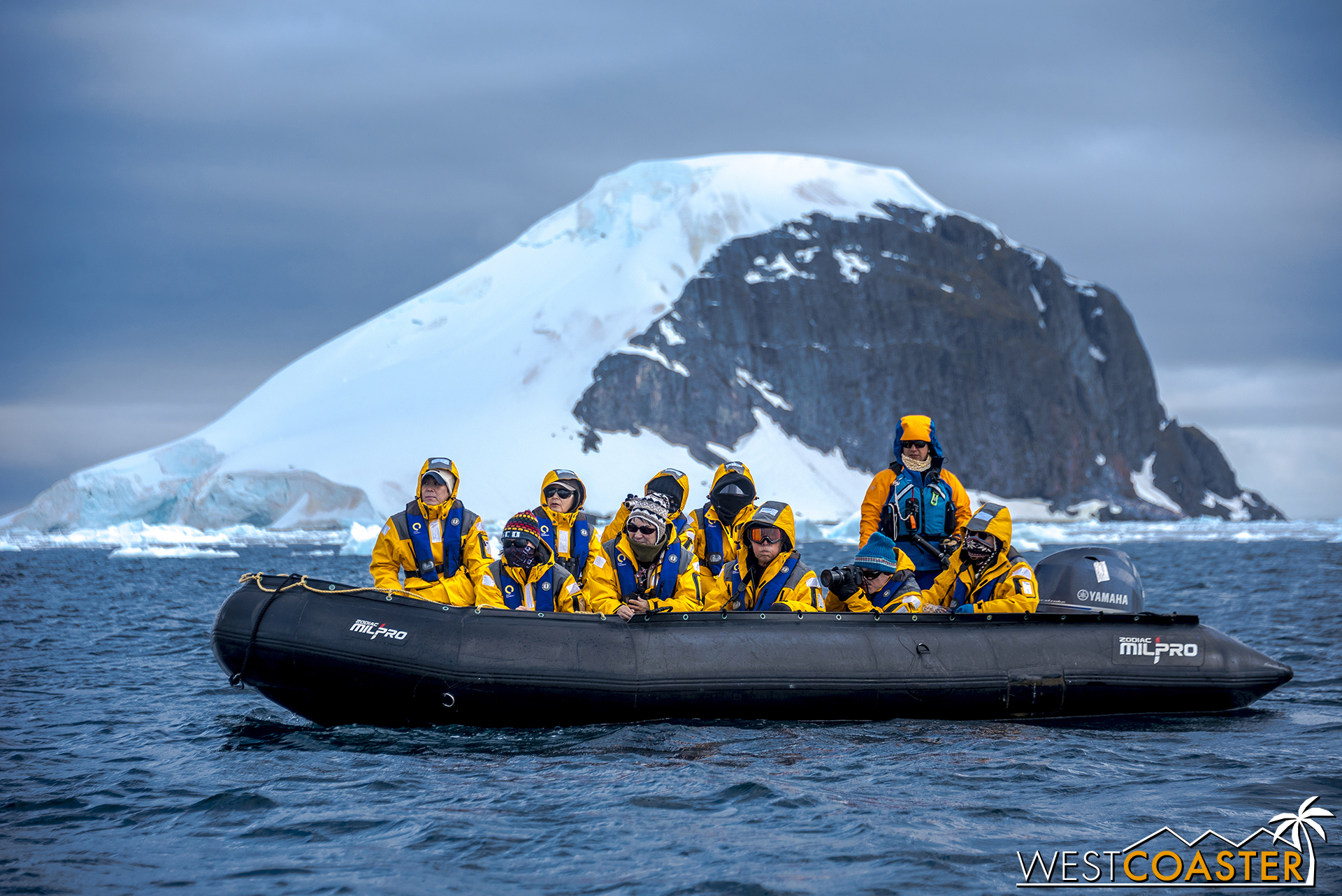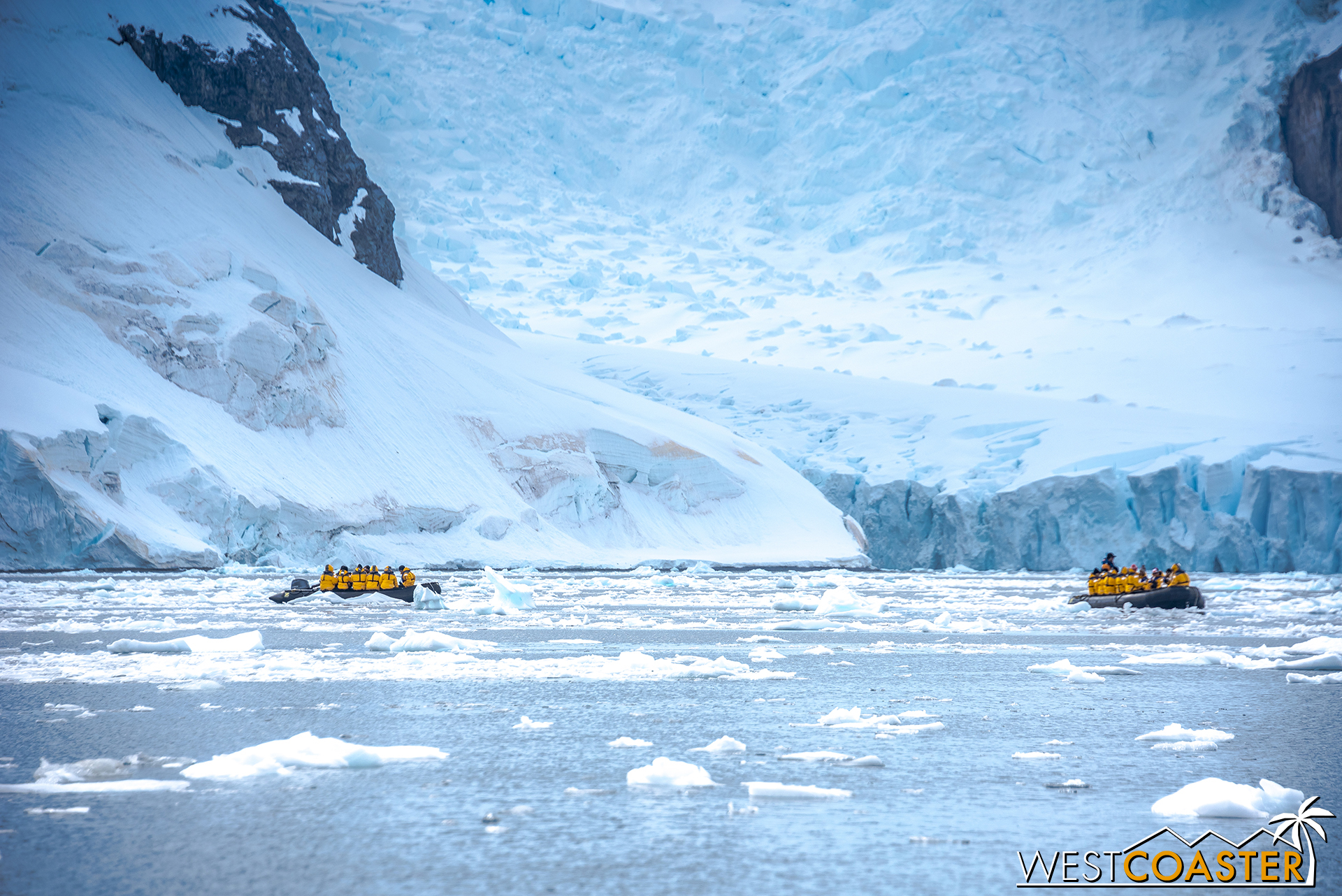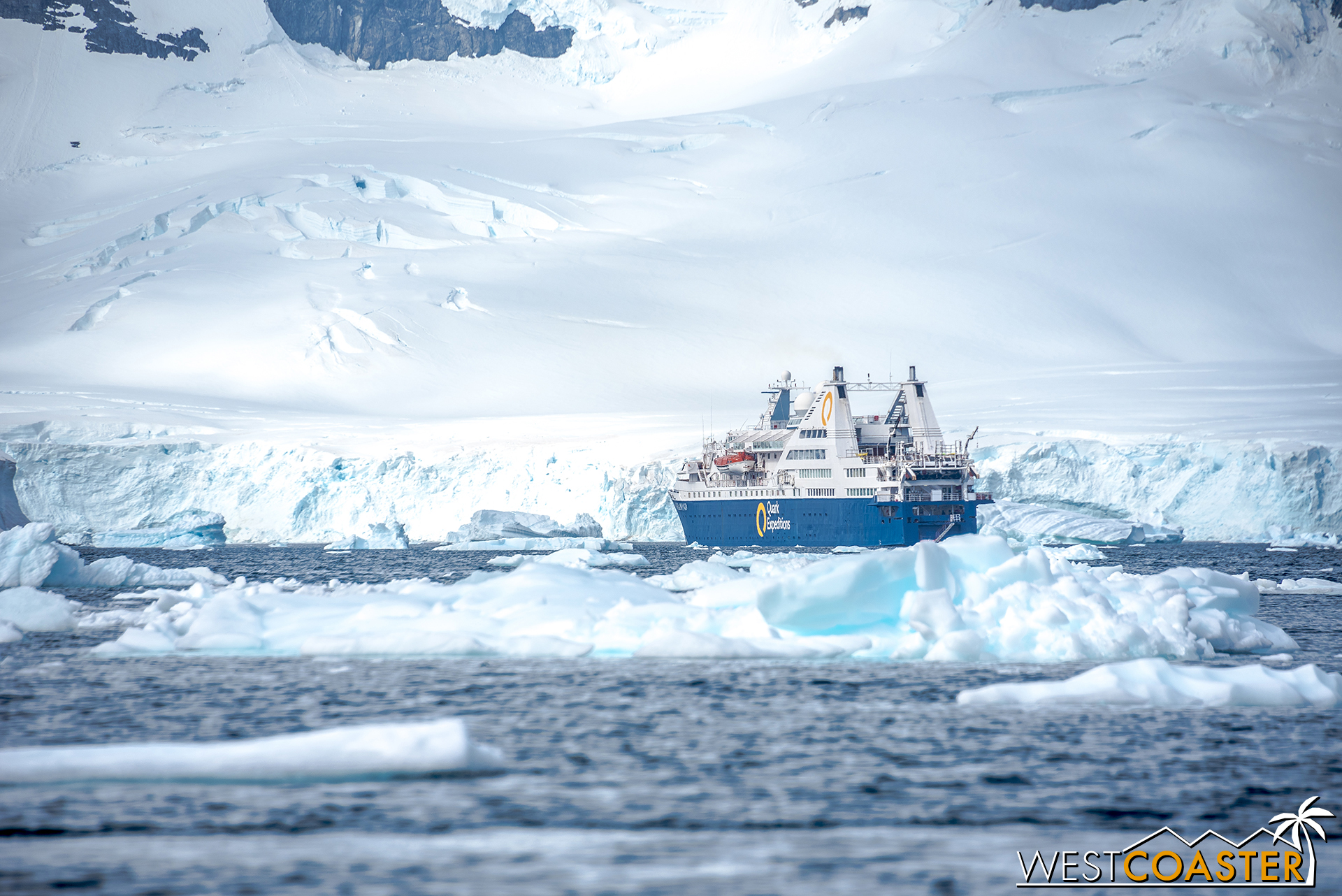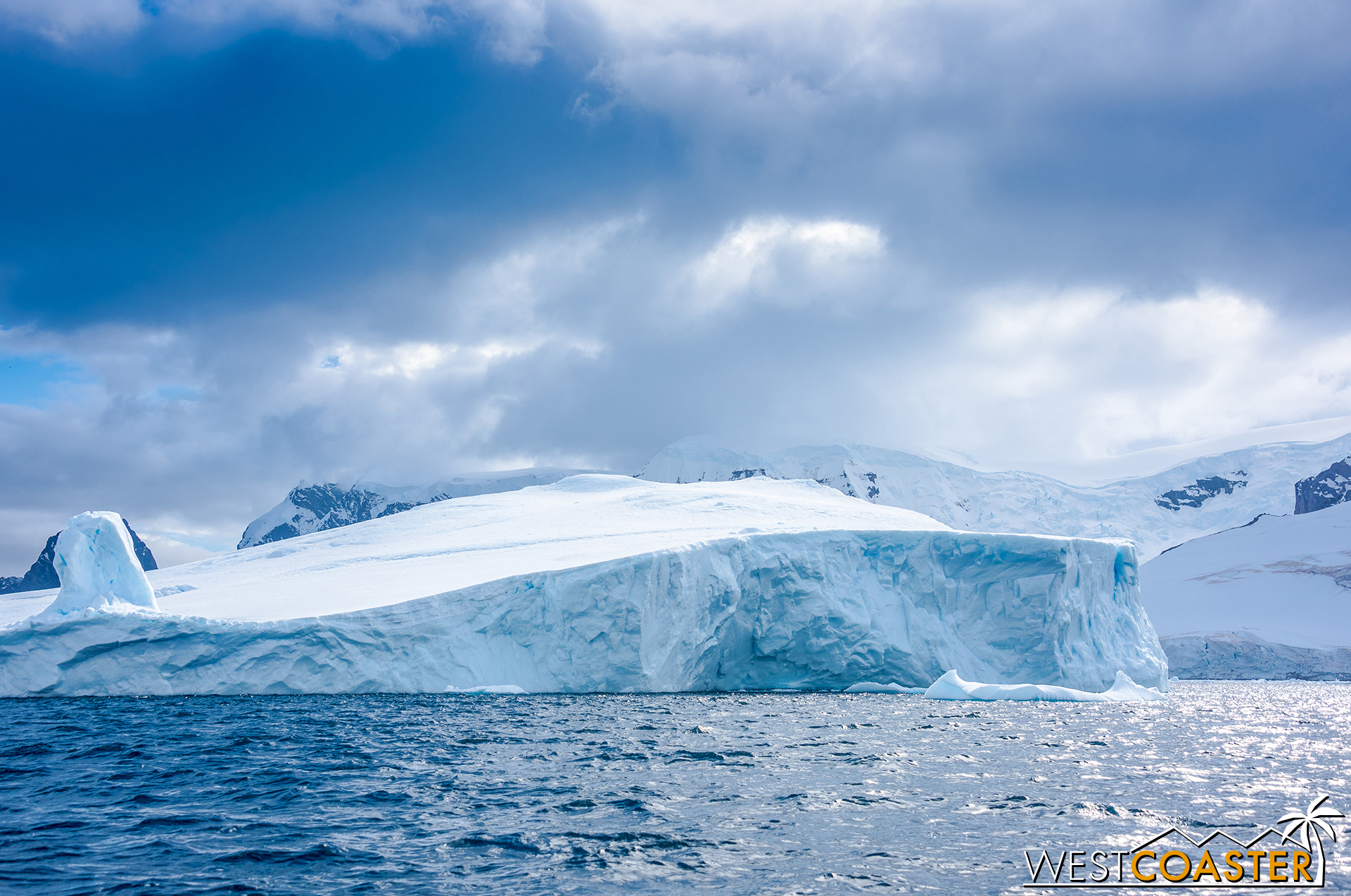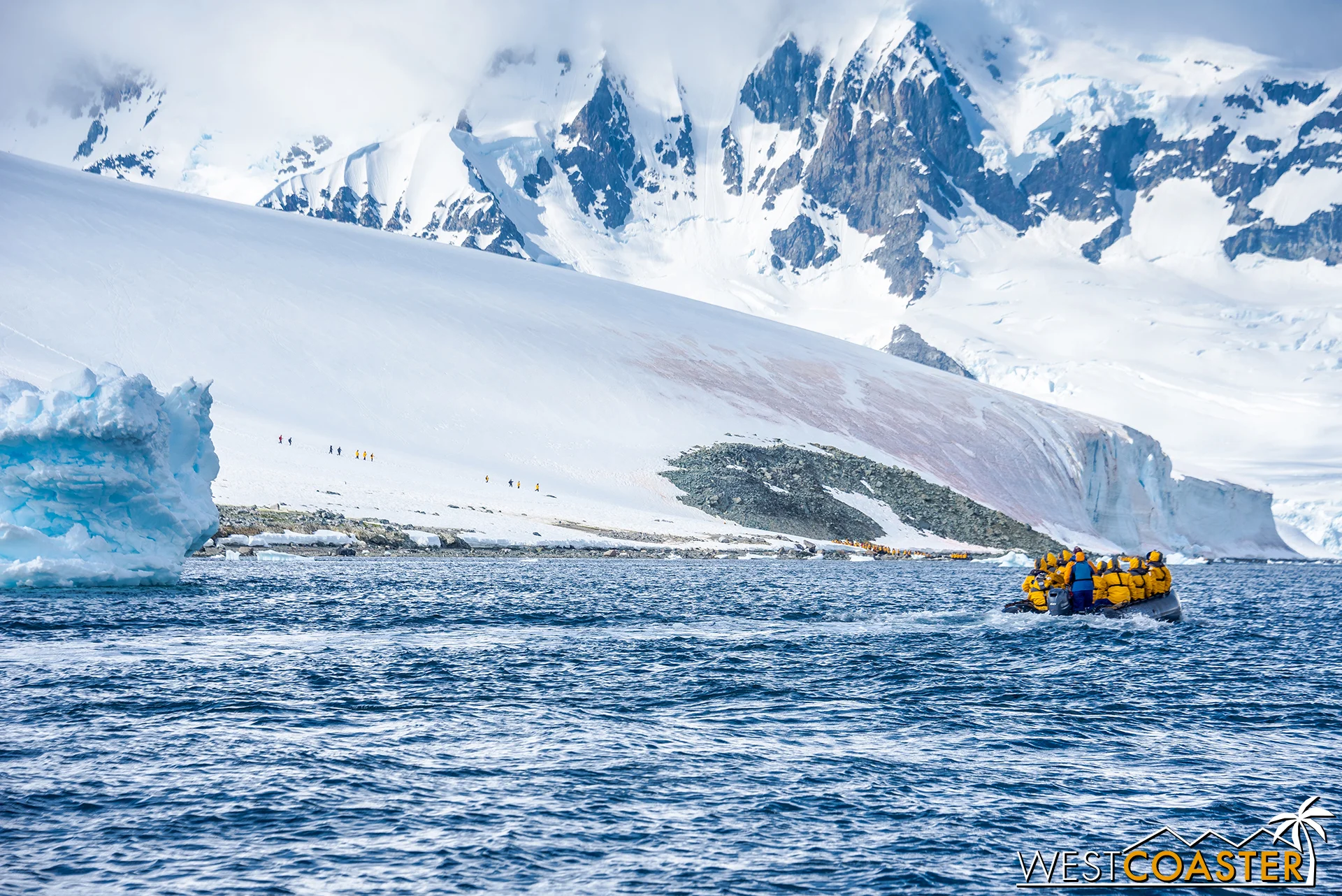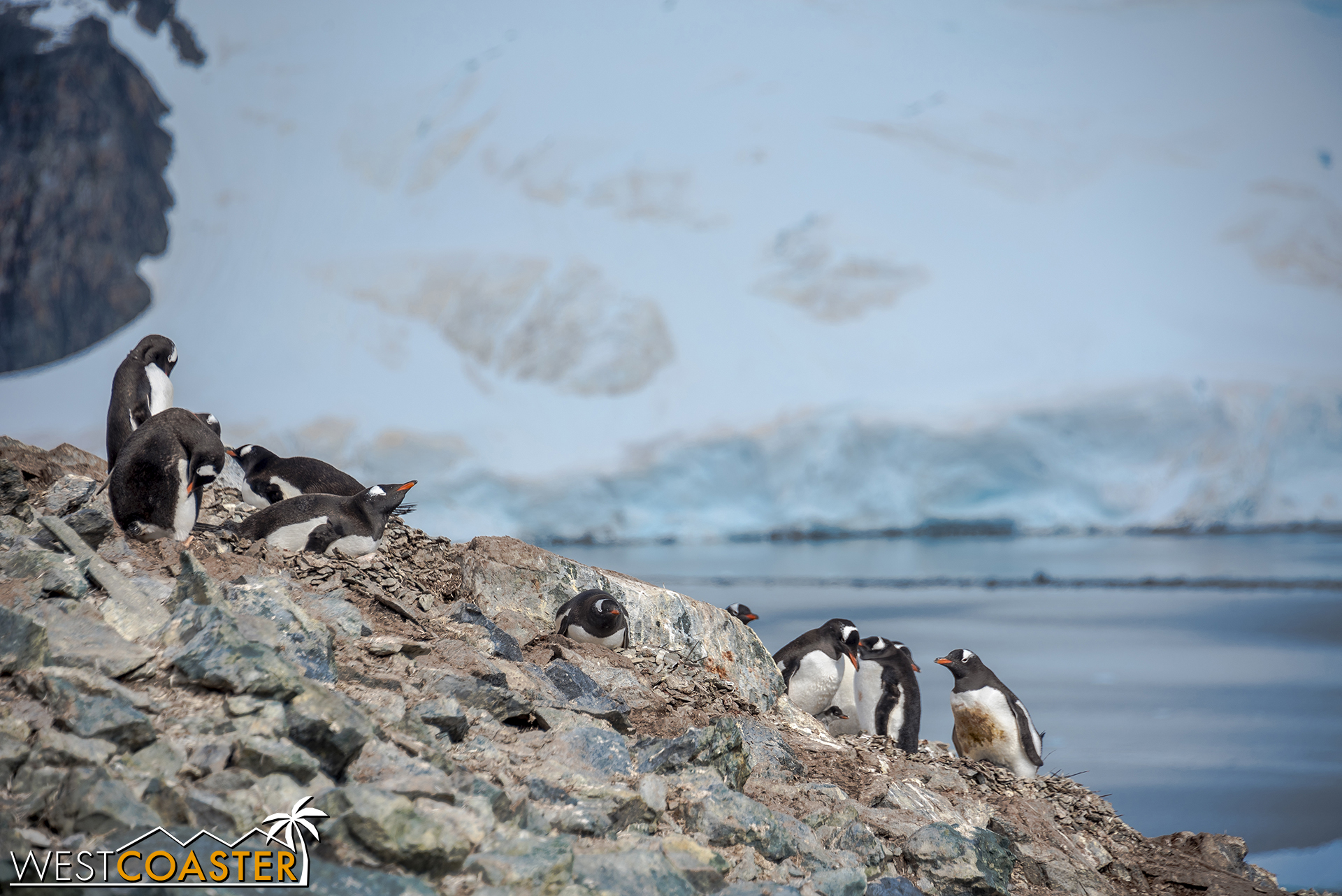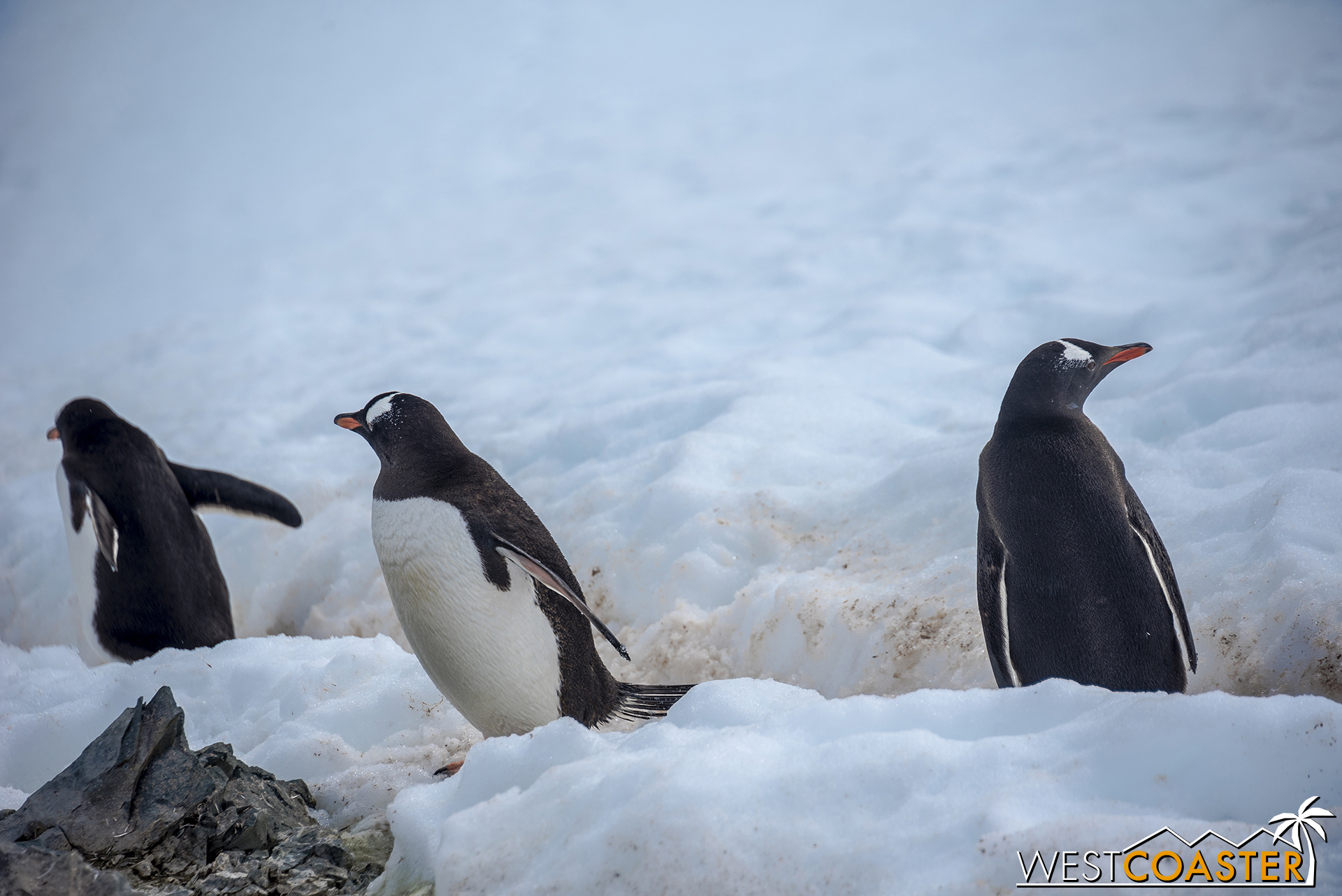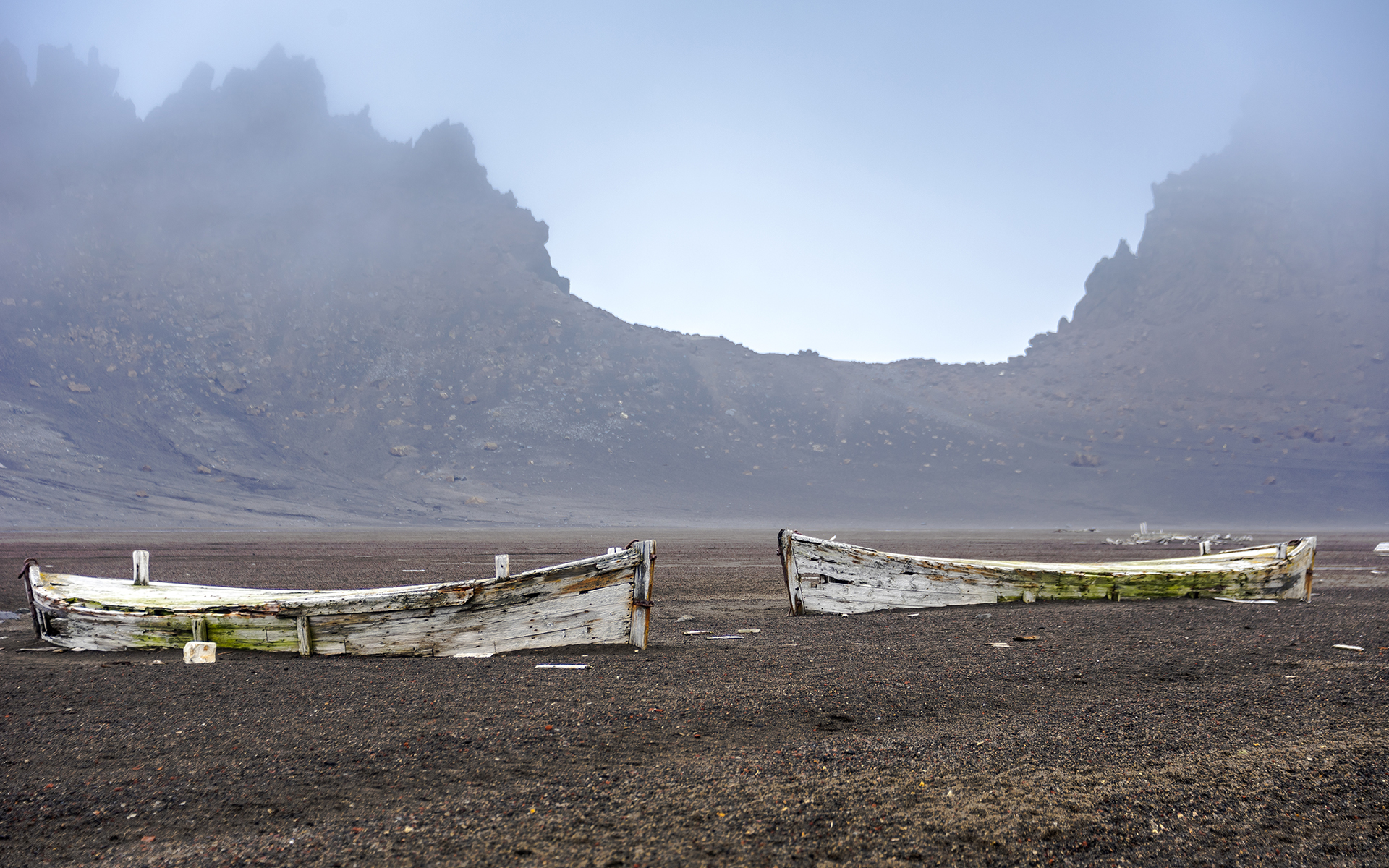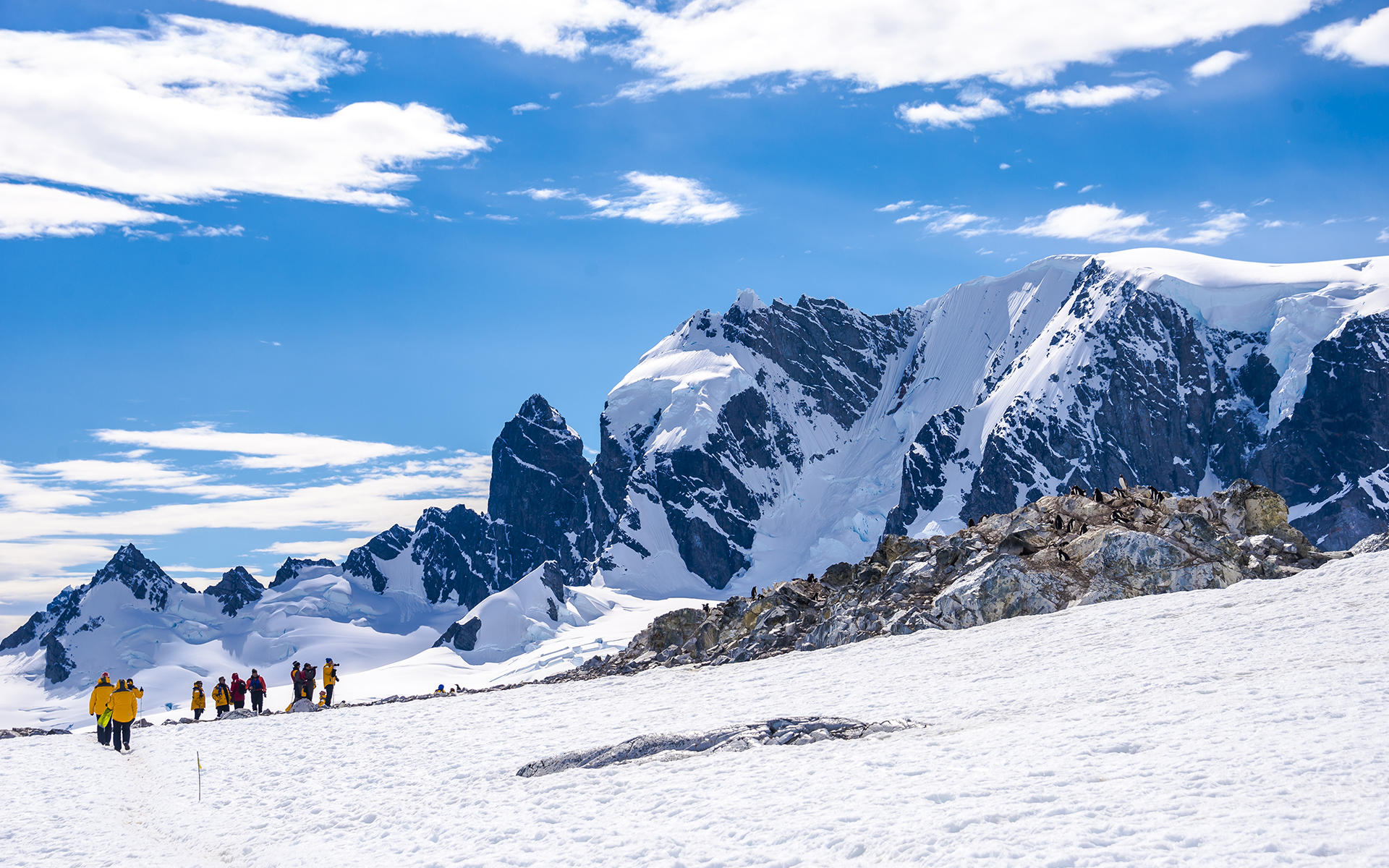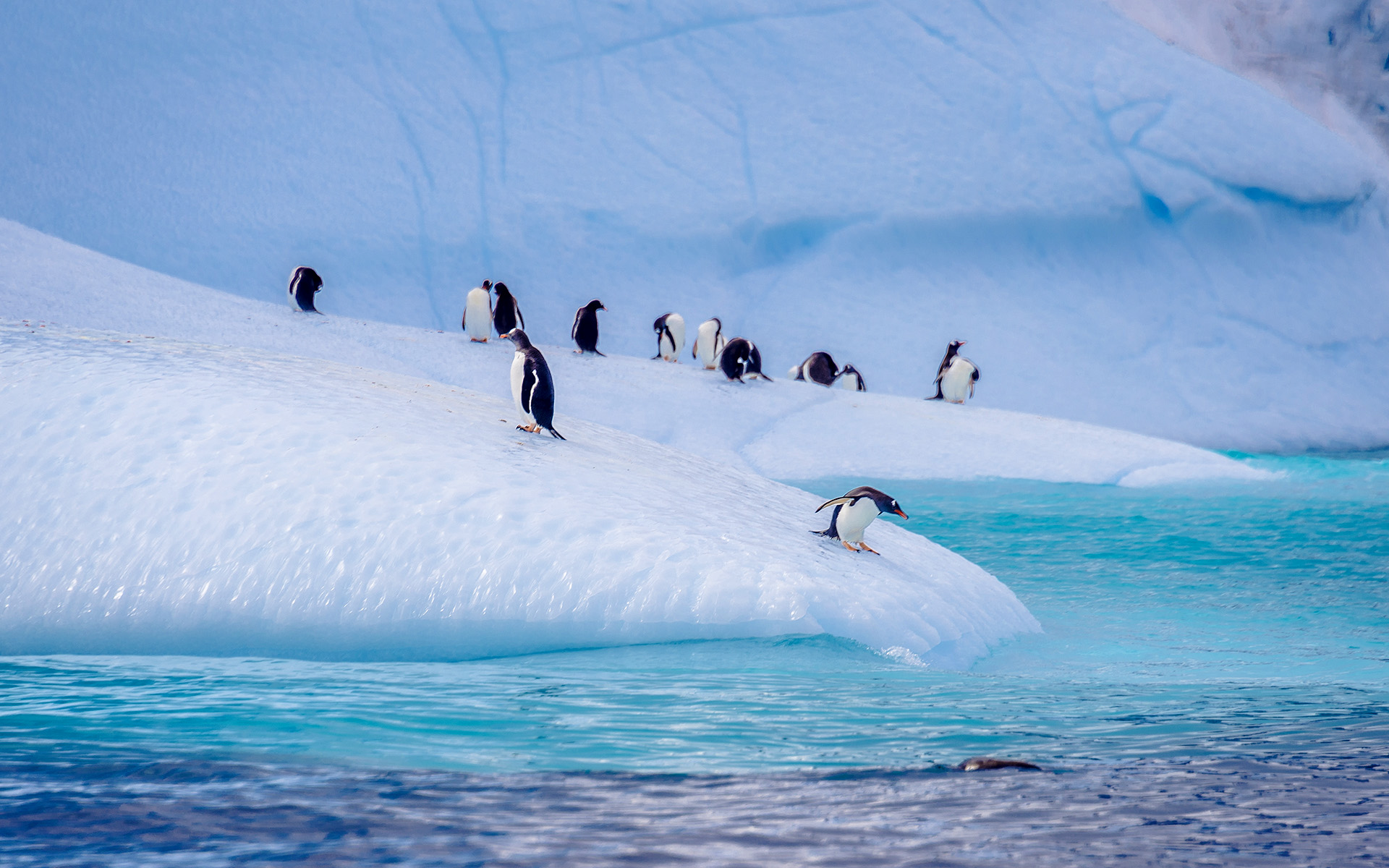Albert's Antarctica Adventure: Danco Island
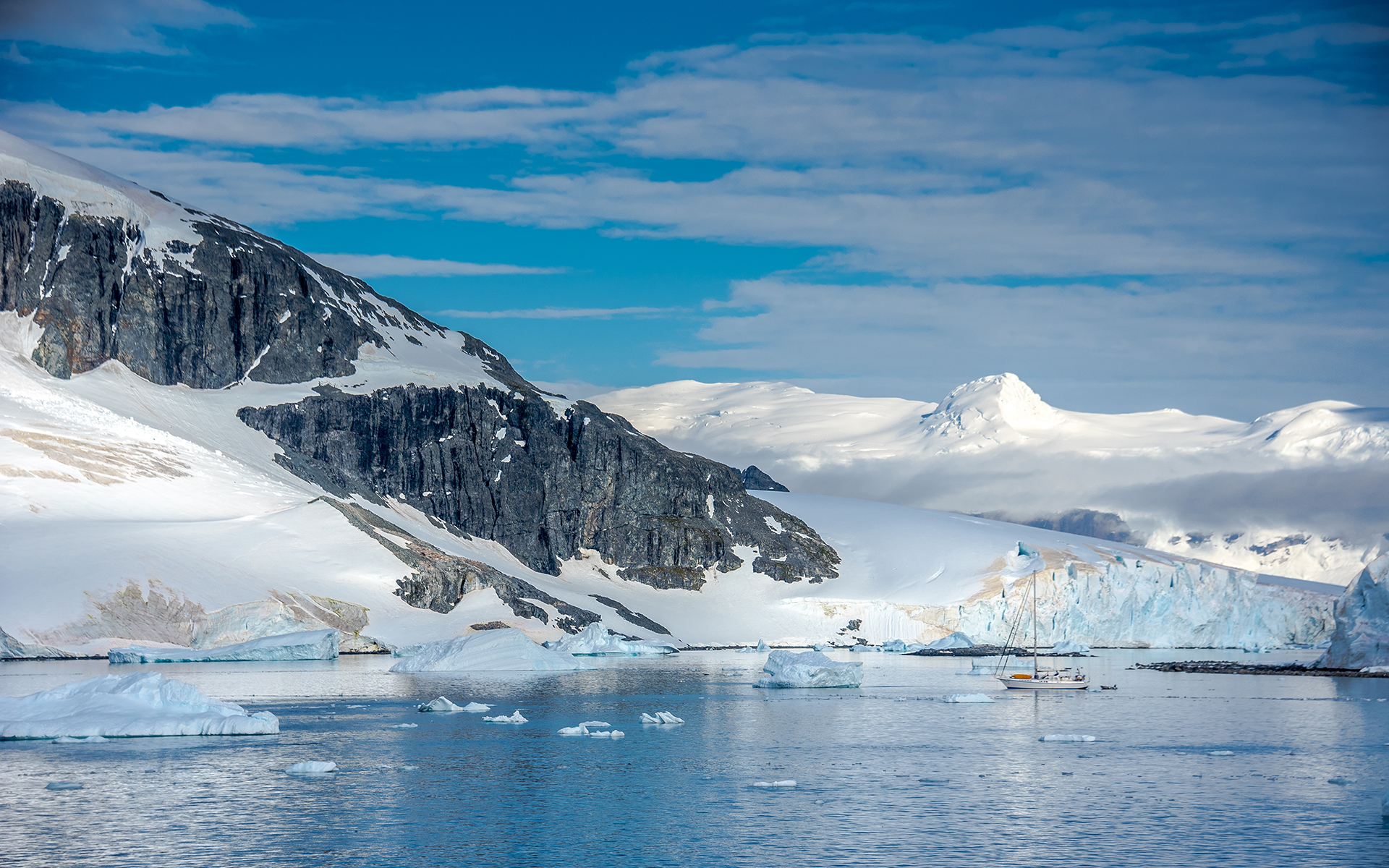
Danco Island, Antarctica
It's time for another installment of my Antarctica trip report series, folks! If you haven't been following along, last month, I took a step toward fulfilling a bucket list item by checking off a bucket sub-list item in the form of visiting Antarctica, "the 7th continent" (but 5th for me). Catch up on my introduction post and Deception Island journal if you missed them. Today, we pick up the day after Deception Island.
The splendor all around us, as viewed from the front of the ship.
The morning of January 11 marked our first full day in Antarctica. We had been surprised the previous afternoon with a landing in the South Shetland Islands, but now, we were at the peninsula and along the continent in proper.
Spectacular blue skies greeted us on a brisk morning--a stark contrast to the gloomy gray of the previous day. The temperature hovered briskly below freezing, but not by much. In fact, throughout the trip, the highs during the day actually exceeded freezing temperature and stayed fairly consistently in the mid 30°s F. That's warmer than most might associate with the coldest continent on Earth, but remember, this was their summer. Just above freezing was the most comfortable Antarctica gets!
Mountains, snow, icebergs... THIS is the Antarctica most envision!
After a hearty breakfast, we made our way to our gangway to board our Zodiac rafts for the morning excursion. The day before, our group had gone to land first, then cruised on the water. At Danco Island, our destination for the next few hours, the reverse applied. Our Zodiac went cruising first.
Unlike Deception Island, there was no particularly fascinating history for our morning site. Danco Island is located just off the Antarctic peninsula, at the south end of the Errera Channel. It's not that big--just over a mile long--but it was home to a British base in the late 1950's that ran for several years. Today, however, it is uninhabited by humans. Gentoo Penguins and a variety of seabirds call it home instead.
Where human footprint was lacking, however, the natural scenery more than made up. As we motored around the small bay in which our ship, the Ocean Diamond, had laid anchor, the spectacular grandeur of the Antarctic wilderness enveloped us. Though Deception Island had carried a unique, misty ambiance, it hadn't conveyed the stereotypical expectation of what Antarctic geography was like. One could not make that accusation here at Danco Island, however.
A glacier folds its ice into the water.
On this gorgeous morning, we were surrounded by ice and snow and dramatic, mountainous rock. The white and gray formed a continental sandwich between the crisp blue hues of the seawater and the sky. Icebergs of varying sizes floated all around us, some innocently small, others massively towering. To one end, near our later landing site, a glacier settled its cascading sheets of ice into the sea. The rippled and crumpling ice formed a texture that seemed surreal, as though Mother Nature was flexing its muscles to remind us of its power.
Elsewhere, the jagged, snow-capped peaks spoke of tremendous uplift and geologically recent volcanism. That made sense, though. Looking at a map of the globe, the Antarctic peninsula seems to extend as a continuation of the Andes Mountains of South America, and the same tectonics of the Andes have helped shaped the peninsula's similarly upward thrusting mountaintops.
Zodiacs exploring out on the water.
The scenery around us could not scream more "Antarctica!" as we puttered around, but that wasn't the only item of interest. At one point, we came upon what appeared to be a lone crabeater seal, lying almost motionless on the ice, surrounded by rust red patches. It looked somewhat grisly, and several of us wondered out loud of the seal was dead, but brief moments of lifting up its head or swinging its tail put that worry to rest. Our expedition guide explained that the red actually came from krill, the diet of the seals. That meant that rather than blood, we were actually looking at seal poop. Red, dirty looking seal poop.
Hey, nature's not always pretty.
A crabeater seal rests on a bed of floating ice, with our ship, the Ocean Diamond, in the distance.
The red streaks are seal fecal matter, stained from the krill it eats.
It's a bit of a gross sight, but such is nature sometimes!
Fortunately, the rest of our surroundings continued to amaze. The size of the mountains and physical features of this rugged, icy terrain really felt highlighted when scaled against other Zodiac boats cruising in the bay. The glistening light brought out lovely, cool colors that were as relaxing as they were stunning. The sea ice bunched together in clumps that could sometimes look thick and heavy from the right angle. Elsewhere, mammoth floating ice cathedrals provided aquatic monuments at which to gawk.
The amount of ice everywhere is staggering.
A Zodiac raft cruises between bits of sea ice.
And as many photos as I snapped, I couldn't really do the scene true justice. In person, the scale of these titanic frozen blocks was breath-taking. The texture was intriguing too. The rivlets and grooves were no different than that of actual rock, which suggested how solid the 'bergs were. As would become the theme, we were constantly reminded of the force that Mother Nature could wield.
Other examples of sea ice tower well above the water.
And some even weather ice and snow into interesting shapes.
The texture of the ice is so beautiful.
All that pristine ice makes for an epic looking vista.
Eventually, we headed toward the shore to commence the second half of our excursion, the landing at Danco Island itself. Much like the previous day at Deception Island, we were greeted by penguins along the beach when we arrived. The difference on this day, however, was that they were gentoo penguins instead of chinstraps at Deception Island, and there were a whole lot more of them!
Danco Island, our landing site for the morning.
Gentoo penguins cluster on the beach, while other expedition members head uphill.
The island has a pretty plentiful population of gentoos.
There was only one path at Danco Island, which made hiking plans easy. It lead up to a high point that would provide some sweeping views of the bay, and to more penguin colonies. We each grabbed a walking stick (or two) and quickly commenced the trudge uphill, through snow and rocks.
The trail could be crowded sometimes, especially when earlier expeditioners were coming downhill. Although the overall elevation gain wasn't that great--just several hundred feet--the walk up was compounded by the heavy winter gear we had and any additional camera gear or bags or dry packs we carried. On the plus side, if any of us were cold, the hike up certainly warmed us up!
Continuing uphill.
Penguins visible over the ridge.
We passed by clusters of penguin rookeries as we continued up, pausing to take pictures here and there. There were countless gentoo all around us, and even if we had proceeded blindfolded, we would have both heard and smelled them. The squawks of gentoo penguins calling out to each other were both obnoxious and absurd. They sounded like drawn out, guttural honks followed by short, punctuating squabbles--not unlike geese in tone, but decidedly unique. Meanwhile, when it came to penguin guano, the mess was everywhere, on rocks, ice, and even other penguins. As adorable-looking as penguins are, they are not clean birds. And their guano brought a most pungent aroma of fishy fecal matter. It was quite unpleasant at first, though honestly, in the ensuing days, we mostly got used to it. Mostly, but never completely.
The Ocean Diamond forms a fine backdrop for gentoo penguins in a colony higher up on Danco Island.
Gentoos have fan tails and black heads with white patches around the eyes.
And they squawk very often!
As off-putting as the gentoo sounds and odor might have been, they balanced things out with a delightful surprise: baby penguin chicks. Prior to the trip, I had learned that January was typically a good time to spot penguin chicks, as they hatch in December into January. But I had never independently verified this and was simply going off secondhand information. Thus, I was cautiously optimistic about seeing penguin chicks but also prepared for disappointment.
Fortunately, there was no disappointment to be had. Here and there, poking their fuzzy heads out of their nests, being cared for by their doting parents, baby penguins peeked out, finding their places in this vast new world of theirs. We would come to find a variety of ages among the chicks, but the first few we spotted appeared no more than a week or two old, and some were even merely several days old. Although I didn't catch it myself, one of the expedition guides even managed to snap a photo of a penguin hatching out of its egg. What an amazing sight that must have been to witness the miracle of nature!
Two parents look after a pair of chicks.
A penguin looks onto the distance as it makes its way downhill.
The ground is a mixture of snow, algae, rocks, and penguin guano.
Watching penguins move around also proved to be comical at times. Penguins are excellent swimmers, but they're somewhat of klutzes on land. They waddle along, wing stretched back for both body cooling and balance, and they make their way awkwardly over snow and rocks, never quite looking comfortable over any obstacle, but still always managing to march on through.
Close-up of a gentoo penguin.
A gentoo gingerly makes its way down the snow.
Antarctic Treaty rules required that we maintain at least 5 meters / 15 feet away from any penguin we encountered, but we could allow them to come close if we came across a penguin and stopped. And as long as we were not impeding any "penguin highways," as the trails from the beach up to their nests along the side of the slope are called, we could have closer experiences with the gentoos. And close they sometimes got! Unfortunately, none never made it within hugging range (though I was reconsidering my goal of hugging a penguin after I realized the extent of their guano), but plenty came close enough for detailed photos and cozy video.
Other penguins roost over their eggs or their young.
Just waddling around.
Ultimately, though, our time at Danco Island was limited. So after an hour-plus hanging out with the penguins, we made our way back down to the beach, where more gentoo had gathered. It was fun to just watch the penguins go about their business as we waited for our Zodiacs to shuttle us back to the ship. To them, these "giant yellow penguins" must have been quite a peculiar sight. But given that they had nothing to fear on land due to the absence of any actual land predators, the penguins just continued on with whatever task they were on, be it venturing out to sea to feed or trudging back up to their nests to feed their young.
Skimming into the water, where they are much more elegant and swift-bodied!
And then, we were waterborne as well, headed back to the Ocean Diamond, where heated interiors and a nice lunch awaited us. We'd have a new destination in the afternoon, but that will have to come in the next edition of Albert's Antarctica Adventure!
Architect. Photographer. Disney nerd. Haunt enthusiast. Travel bugged. Concert fiend. Asian.










